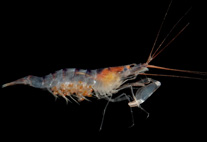Abstract
The endemic Tasmanian mountain shrimps of the genus Anaspides Thomson, 1894 (Anaspidacea) have attracted considerable scientific interest as potential basal eumalacostracans and as 'living fossils', closely resembling their Triassic forbears (Coineau & Camacho 2013). Two species are currently recognised, with A. tasmaniae (Thomson, 1893) (type locality: Mount Wellington) accorded a wide range throughout most of central, western and southern Tasmania, and A. spinulae Williams, 1965, believed restricted to central Tasmania from Lake St. Clair (type locality) and immediate environs (O’Brien 1990). Despite the current taxonomy, heterogeneity in A. tasmaniae has been increasingly suggested, which may have important conservation management implications (e.g., Jarman & Elliot 2000). Jarman & Elliott (2000) recognised three potential clades (based on mitochondrial 16S sequences) that may correspond to separate species. A taxonomic and phylogenetic revision of the genus, now in progress, found A. tasmaniae to be restricted to the vicinity of Mount Wellington, and all Anaspides from other localities to represent other species. Owing to delays in the completion of the revision, however, some of the new species of Anaspides are briefly diagnosed below in order to make the formal species names available for other studies now underway. Full accounts of the species of Anaspides will be given when the revision of the genus is completed.

